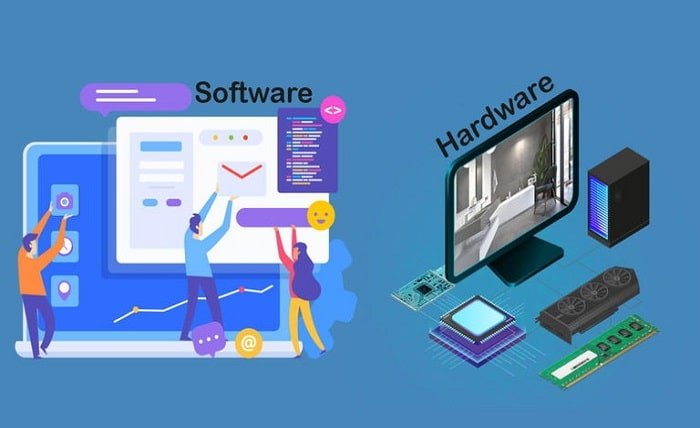Hardware-Software Co-Design: Optimizing Embedded Systems

Introduction to hardware-software co-design
In the modern world of technological advancement, embedded systems are found to be the fundamentals of many devices and applications. Several applications, such as automotive electronics and home appliances, among others, rely on embedded systems to offer the required functionality and performance. But let us first note that the creation of these systems is far from trivial. Combined development of hardware and software is seen as an effective way of converging the system and acting on it in an efficient way to facilitate the goals set for the maximum utilisation of the embedded systems. Among such approaches, embedded designing is aimed at designing such systems effectively. This process requires close collaboration between the hardware and software departments to create a levelled and well-tuned result.
What is embedded designing?
Embedded designing is a process of designing specific systems that require software and hardware integration to perform certain functions. These systems are generally small and are limited by size, power and performance characteristics. This means that while general-purpose computers are designed to handle various tasks, embedded systems are designed to perform specific tasks. The significance of embedded designing is in the determination of components, both in hardware and software that will suit the application requirements. Designers of embedded design services face the goal of the design to be and to perform as a real-time system with good reliability and high efficiency. It is noteworthy that these designs can be observed in such common uses as industrial machines and home appliances.
The role of hardware design in embedded systems
When it comes to the performance and dependability of an embedded system, the design of the hardware is paramount. Hardware design in USA and other tech-oriented areas is aimed at developing new hardware which is unique to the needs of built-in systems. This can range from microcontrollers, sensors, memories and input/output interfaces, among others. The greatest difficulty in the design of hardware is to make the hardware satisfy all the requirements of the system in limited size, low power and low cost. The hardware design strategy of an embedded system should be such that the hardware is capable of running the software that is to run on the system to enhance efficiency and effectiveness.
In embedded designing, the hardware designing personnel are required to work more in close rapport with the software developers to properly design the architecture to support the hardware by the software processes. This leads your collaboration to systems possessing high capabilities and satisfying the need for the supplied performance to do it with minimal resource consumption.
The importance of embedded design service
Embedded design service is a professional service of delivering sophisticated solutions for developing the required embedded systems for different industries. Such services sometimes entail the designing of the equipment and the software, interfacing the equipment and the software, and testing and validation of the equipment and the software. An embedded design service provider has the role of turning the needs of their clients into usable designs that may fit into larger systems. Other times, they are engaged in tasks that involve the design of both the hardware and software components of a given system to ensure that the system in question depends on the functional, optimum, and safety requirements.
As much as software is an important factor in co-design, designers who offer embedded design services should develop an adequate understanding of how the two elements interrelate. This helps optimise the system overall as they should not be separate entities of hardware and software. Due to the integration of the development process of both the hardware and the software aspects within the embedded system, these services come in handy to ensure that there is a closely related design which improves the functionality of the whole system.
Optimising performance through hardware-software co-design
The major motivation behind the hardware-software codesign is to arrive at an optimal solution for the embedded systems in terms of performance, power, and cost. The point is that when a piece of hardware and the corresponding software are designed at the same time, there are no difficulties with the allocation of functions, and a designer can choose the best implementation of a certain piece of the necessary system. For example, block like signal processing prefers to have them done in hardware because of the facility that comes with it as compared to software that has developed algorithms preferred. This balance is important in optimising embedded systems for different applications. Custom hardware solutions are very significant in the USA, especially in the automotive, healthcare and aerospace industries, where reliability and performance are key factors.
Challenges in hardware-software co-design
Although beneficial, hardware-software co-design has its challenges. A major challenge is that both hardware and software teams must be closely coordinated, which can be difficult since both teams generally work on different development cycles and methodologies. Hardware changes are usually much slower and require more resources to implement; therefore, early decisions are often more important and should be viewed with true seriousness because changes can easily delay timelines and budgets afterwards. Additionally, embedded design usually involves real-time constraints, and the system must quickly react to received inputs. To achieve good results, thorough planning of interactions and a solid comprehension of the hardware-software operations are needed. Design service providers also have to make trade-offs about performance, power, and cost, the organisation of these factors can influence the final design outcome.
Future trends in embedded designing
The field of embedded design is growing at an astonishing pace due to developments in technology that improve hardware-software integration. Another obvious trend is the use of artificial intelligence and machine learning in embedded systems that need new hardware to support higher computation. There is also growing demand for Internet of Things (IoT) devices, which require very low power consumption and long periods of fully autonomous operation. Specifically for the world of hardware, design is centred on constructing parts that enable software modularity and upgrade. Moreover, with 5G technology involved, there will be faster device coordination with a trend towards balance and efficient real-time data handling systems.
Conclusion
Hardware-software co-design is an effective strategy for the design of embedded systems that helps to achieve the balance of low power consumption, high performance, and relatively low cost. The synergy offered by having a holistic consideration of both the hardware and the software from the onset allows engineers to design custom systems that would meet their application requirements. In this regard, embedded designing is very relevant since it involves the integration of coherent constituent components. As AI, IoT, and 5G technologies advance, the need for Embedded Design Services will increase more to enhance the innovation of hardware design in the USA and the entire world.





